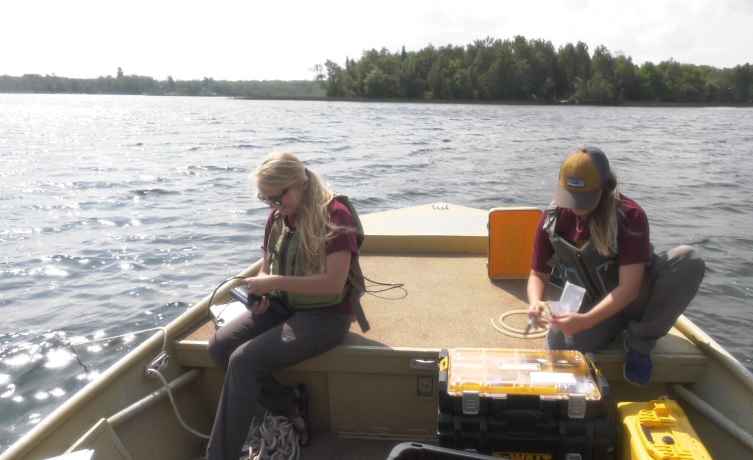Research underway about harmful algal blooms
[anvplayer video=”5052640″ station=”998130″]
Last Friday was a beautiful day to be out on a boat. And a trio of people from UMD’s NRRI have been out on the water a lot.
This is the second summer of sampling they’ve done on six lakes across the state of Minnesota.
The goal is to find out what’s causing harmful algal blooms.
Leah Egan and Kaela Natwora showed us their skills on Caribou Lake, which is their training lake, but does not have harmful algal blooms.
Egan, who is a graduate teaching assistant, focuses on the parameters of the water, using an instrument that measures things like temperature and dissolved oxygen.

UMD's NRRI is working on a project studying harmful algal blooms.[WDIO]
Natwora runs a portable pump and a filter which collect microbes. She’ll then study the DNR and RNA to see what types of cyanobacteria are there.
She’s from Buffalo, New York, and saw the effects of harmful algal blooms on Lake Erie growing up. "It was just devastating to watch," she told us.
Egan said, "All of these different parts of the project come together as a whole, and will help us learn more about harmful algal blooms."
The blooms can create toxins that can be deadly for dogs and harmful for humans. They can also lead to fish kill.
Senior scientist Chris Filstrup, from NRRI, has been studying what’s called cyanobacteria for years. "If we can better understand what’s causing these, then we can predict them better. We are also working on a rapid assessment tool, so we can streamline results."
That means they can notify people sooner, if they were in the potentially toxic water.
Right now, they have two summers worth of sampling to crunch data for. But what they do know is, it’s not one silver bullet that’s causing the problem.
"There’s a whole suite of environmental factors that can be contributing to these blooms. And what’s driving a bloom in one lake is not driving the bloom in another, Filstrup said.
Now they’ll be working on a report that they hope to have finished by early next year. And they all love the lakes, and getting to know the people who live on them.
The study is funded by the Minneota Seagrant.
If you see an bright green algal bloomm, you’re should report it to the MPCA: https://www.pca.state.mn.us/water/blue-green-algae-and-harmful-algal-blooms